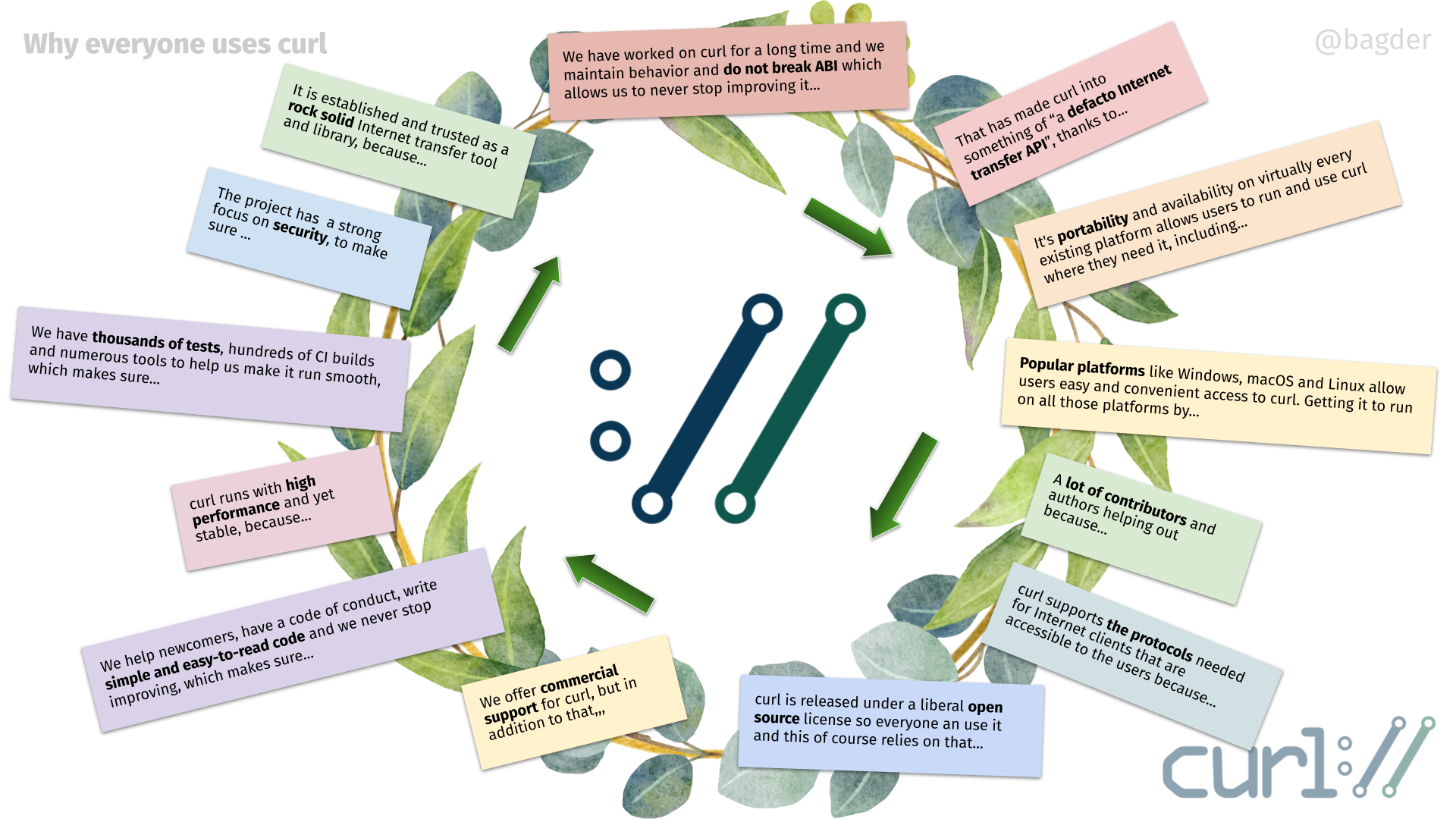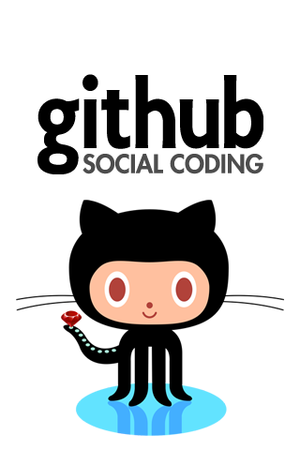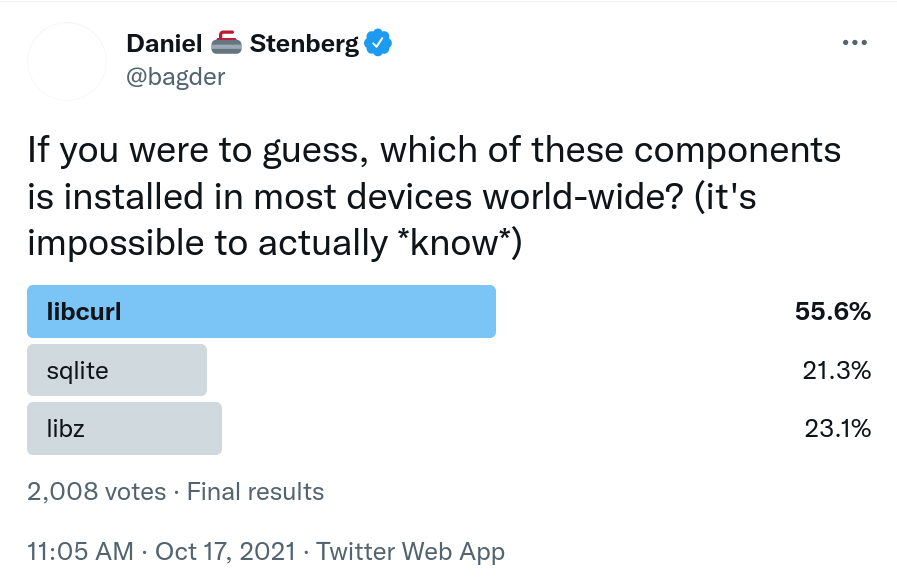When I speak of curl in this post, I lump curl the command line tool and libcurl the library into one, and I just call them curl. Related: my webinar titled “Why everyone is using curl and you should too“.
I believe just about every curl user has their own story and explanation about why they use curl in their product or device. I think there are several good reasons why users, including many of the world’s largest and most successful tech giants, decide they can lean on curl for Internet transfers.
curl is used in mobile phone and tablet apps, it is used in TVs, cars, motorcycles, fridges, settop boxes, printers, smart watches, medical devices and computer games, both on desktop and in game consoles and of course in just about every web or Internet server out there. It was also used to land on mars. Put simpler: in almost every internet-connected device.
Buy why use curl?
I want to highlight these four main properties:
In each of these areas, curl is one of the top alternatives if you compare against competitors.
It maintains this position because of its standing on a very firm foundation; a backbone built on Open Source, Leadership, Testing and Security.
Reliable
Solid code and product – most people and users never experience any bugs or problems with it. They keep using it over decades without any glitch.
Secure, means we deliver products that are safe and secure by default and we keep a strong focus and care about security related flaws in the project.
Stable API and ABI. Our users know they can always upgrade to a later version without worry. Things that worked before will continue to work tomorrow and forever.
Constantly refined. curl keeps up with the Internet, our users, new protocols and evolving standards. We never stop.
Available
It runs everywhere. Whatever platform of choice you go with, you can trust that curl can run there too. With the same API.
curl is here and has been around since decades. The same trustworthy product and API you knew in the past is still here and we do not plan to go anywhere. We have a long and proven track record that holds for all and any scrutinizing you do.
Often pre-installed on and with operating systems, making it easy to access and use.
Thoroughly documented. A library and its API is only as good as its documentation. Users need to be able to figure out available options and how the API is to be used to make effective and secure applications. curl has world-class documentation, including all the tiny details you might need. Online and offline.
Capable
Powerful. The provided API is versatile enough to power the Internet transfers for virtually all kinds of applications and use cases.
Fast. Speed is important.
curl supports “all the protocols” a modern application needs and the implementation is interoperable, proven and battle-tested in the wild and over the Internet for a long time.
The Internet is a crazy place and there are countless ways to do transfers. curl offers a myriad of features to please the most demanding users.
The flexible build allows users to streamline and control exactly what their curl build supports and provides.
Affordable
curl is free and open source under a liberal license. You don’t have to pay anyone to use or run it. We also provide free help and support on the mailing lists.
We offer commercial support to help users use curl and solve any related issues you might run into. Using curl does not waste your engineers’ time.
curl is also easy to contribute to, for the cases where you want to fix a bug or add a feature. We are a no-friction, no-bureaucracy project with a positive attitude and low bar for newcomers.
The Foundation
All of this is possible because of a solid and firm project foundation. We are Open Source, with full transparency and ability for everyone to inspect and follow along. To verify every claim.
I think we have a good Leadership, in which I of course bang my own drum a little bit, but we have managed to steer this boat for a long time in a direction that has made curl able power a world of Internet transfers. Rules, enforcement, knowledge, communication, guidelines, concepts and atmosphere are important factors. We lead by example.
There’s a strong emphasis on testing the products in a non-stop way as much as possible with numerous tools, from the first pull-requests, to the merging of commits into the main branch and onward, in order to find and fix as many nits as possible before the code reach users.
Almost no project can match the level of detail and information we provide with each and every security vulnerability we have published. We run a generous Bug Bounty program and pay a growing amount of monetary rewards to those who can identify new security problems.
The cycle of curl
When discussing the different qualities and properties of curl and the curl project, none of them were of course built-up or created separately from the others. They all tie in together and we have iteratively built and created curl gradually and little by little over a very long time.
One thing lead to another that leads to the next in a positive spiral that never ends. They are all interconnected and improving curl in one of these areas can definitely have a direct positive effect in one the other areas.
The cycle of curl is about improving curl all over for the benefit of everyone and the entire project, which leads to it just getting better and more used. Which leads to more developers, more features and more users etc. On and on and on without an end.

If you’re up for it: tell me why you use curl!

















